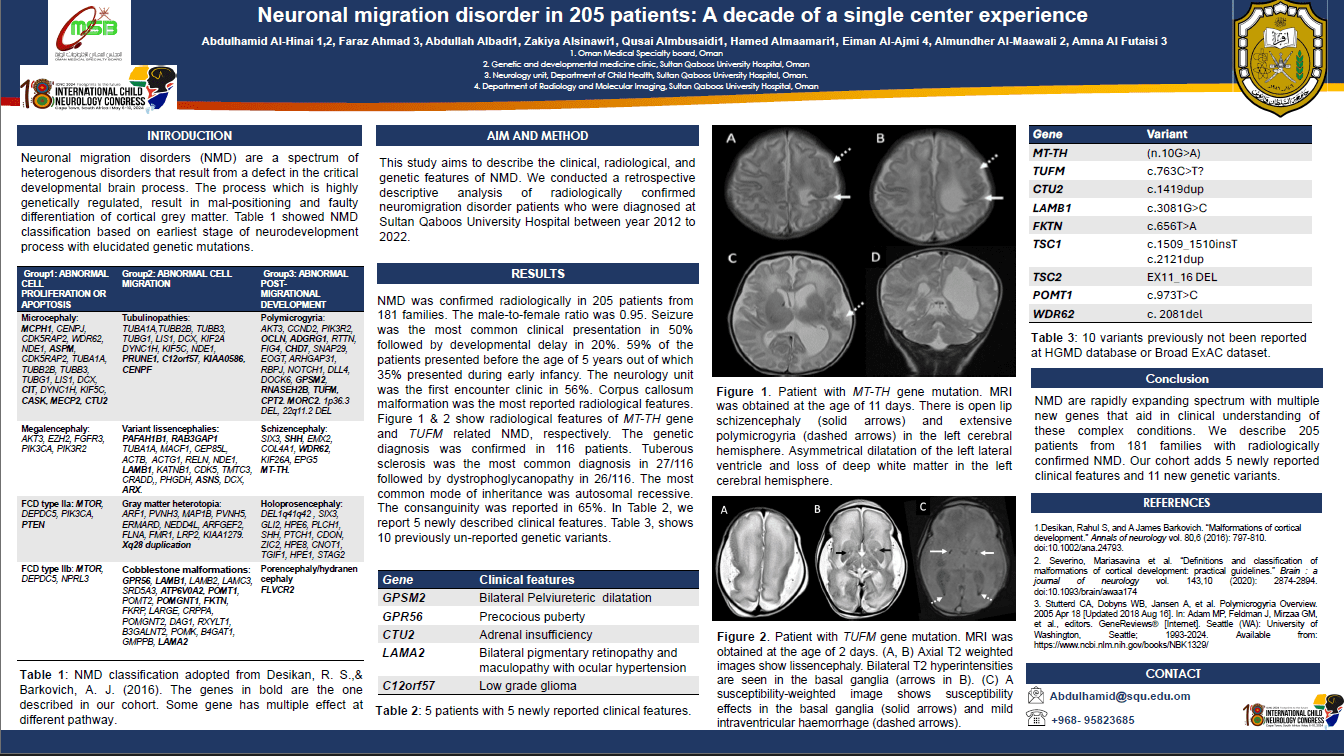Neuronal Migration Disorder In 205 Patients: A Decade Of A Single Centre Experience
Neuronal migration disorders (NMD) are a spectrum of heterogenous disorders that result from a defect in the critical developmental brain process. The process which is highly genetically regulated, result in mal-positioning and faulty differentiation of cortical grey matter. Aim: This study aims to describe the clinical, radiological, and genetic features of NMD. Method: We had conducted a retrospective descriptive analysis of radiologically confirmed neuromigration disorder patients who were diagnosed at Sultan Qaboos University Hospital between 2012 and 2022. Result: NMD were confirmed radiologically in 205 patients from 181 families. The male to female ratio was 0.95. Seizure was the most common clinical presentation in 50% followed by developmental delay in 20%. 59% of the patients presented before the age of 5 years out of which 35% presented during early infancy. The neurology unit was the first encounter clinic in 56%. Pachygyria and corpus callosum malformation were the most common reported radiological features. The genetic diagnosis was confirmed in 116 patients. Tuberous sclerosis was the most common diagnosis 27/116 followed by dystrophoglycanopathy in 26/116. The most common mode of inheritance was autosomal recessive. The consanguinity was reported in 65%. Five possible candidate genes (MT-TH (n.10G>A), C12ORF57, FLVCR2, TUMF, SHH) were found. In conclusion, NMD are rapidly expanding spectrum with multiple new genes that aid in clinical understanding.
Abdulhamid Al-hinai
Oman medical specialty board
Oman
Faraz Ahmed
College of Medicine and Health Sciences
Oman
Abdullah Albadi
Oman medical specialty board
Oman
Zakiya Alsinawi
Oman medical specialty board
Oman
Qusai Almbusaidi
Khawla hospital
Oman
Hamed Almaamari
Oman medical specialty board
Oman
Eiman Al-Ajmi
Sultan Qaboos University Hospital
Oman
Almundher Al-Maawali
Sultan Qaboos University Hospital
Oman
Amna AL FUTAISI
College of Medicine and Health Sciences
Oman
